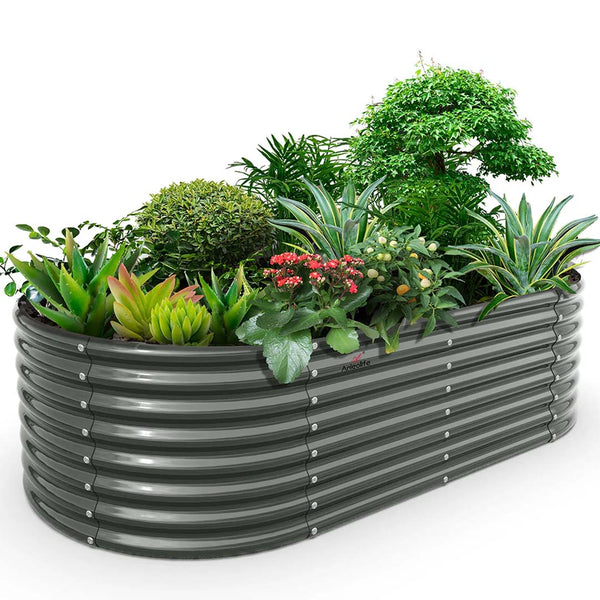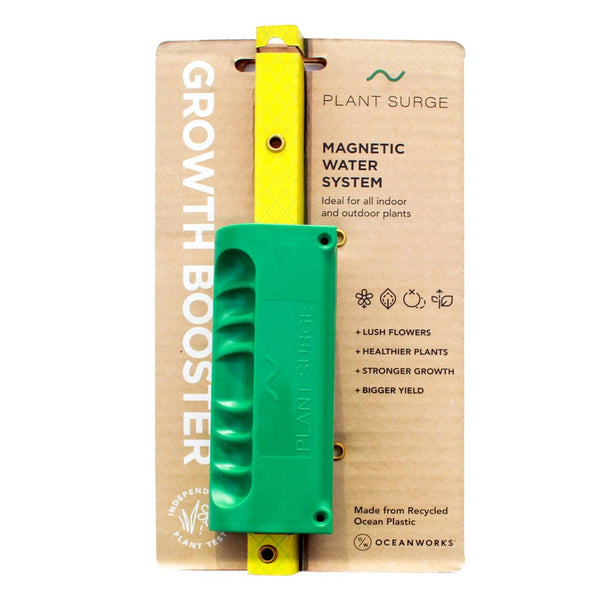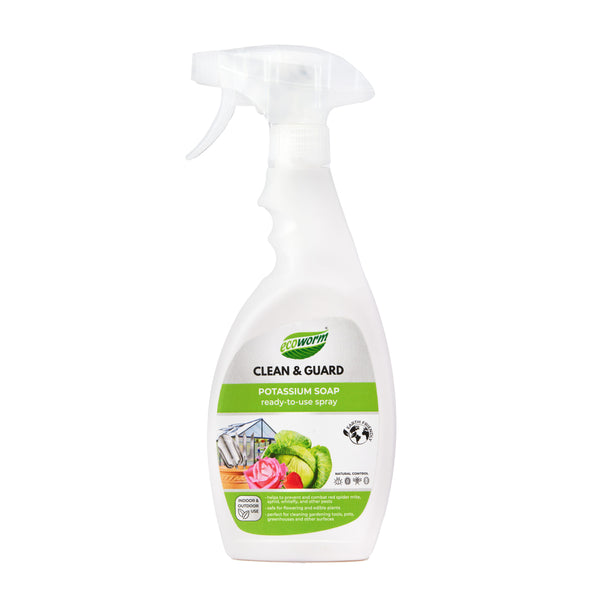The Back-Saving Miracle: Elevated Flower Beds That Make Gardening Possible At Any Age

Understanding Raised Garden Beds
Raised garden beds are a game-changer for anyone wanting to up their gardening game. They bring a bunch of perks and come in all sorts of styles to fit what you're looking for.
Benefits of Raised Beds
Raised beds have a lot going for them, making them a hit with gardeners of all ages and skill levels. Here's why they're awesome:
- Better Soil: With raised beds, you get to pick the soil you use. Fill 'em up with the good stuff, especially if your yard's dirt is more like dust. When the nutrients run low, just toss in some compost like Black Gold® Garden Compost Blend (National Garden Bureau).
- Great Drainage: These beds drain like a dream, so no more soggy roots. Go for beds at least 18 inches deep, but two feet is even better for both looks and ease of use.
- Pest Busters: Raised beds can keep those pesky critters at bay and cut down on soil diseases. The height makes it tougher for pests to munch on your plants (National Garden Bureau).
- Longer Growing Time: The soil in raised beds heats up quicker in spring and stays warm longer in fall, giving you more time to grow your goodies (National Garden Bureau).
- Easy on the Back: No more bending or kneeling all the time. Raised beds are perfect for folks who need a little help getting around.
Types of Raised Beds
There's a bunch of raised bed styles out there, each with its own perks. Check out these popular ones:
- Wooden Raised Beds: The classic choice. Easy to build with different woods, but they might need some TLC as they can rot over time.
- Metal Raised Beds: Built tough with steel or aluminum, these last a long time and resist pests. Just watch out—they can get hot in the sun. For more, see our piece on metal raised garden beds.
- Stone Raised Beds: Super sturdy and add a nice rustic vibe. They stand up to weather and pests but can be pricey and a bit of work to set up.
- Fabric Raised Beds: Made from breathable fabric, these are great for root health and are easy to move around. Perfect for small spots like patios or balconies and ideal for no-till gardening.
- Plastic Raised Beds: Made from recycled plastic, these are tough and pest-resistant. They're a breeze to put together but might not win any beauty contests.
| Type of Raised Bed | Durability | Maintenance | Cost | Ideal For |
|---|---|---|---|---|
| Wooden | Moderate | High | $ | Traditional gardens |
| Metal | High | Low | $$ | Long-term use |
| Stone | Very High | Low | $$ | Rustic aesthetics |
| Fabric | Moderate | Low | $ | Small spaces |
| Plastic | High | Low | $ | Easy setup |
Picking the right raised bed depends on what you need, your budget, and what you want to achieve in your garden. For more details on each type, check out our articles on raised garden bed and raised flower beds.
Choosing the Right Materials
Picking the right stuff for your raised flower beds is key to making sure they last, work well, and look good. Let's break down the good and the bad of different materials so you can make a smart choice.
Wood vs. Steel
Wood and steel are the go-to picks for building raised garden beds. Each has its own perks and quirks.
Wood
Wood's the budget-friendly favorite for raised garden beds. Cedar, redwood, cypress, and hemlock are tough woods that can keep your garden going strong for five to ten years. Just make sure to use untreated wood to keep nasty chemicals out of your soil.
Pros:
- Looks natural and pretty
- Easy on the wallet and easy to find
- Great for DIY projects
Cons:
- Can rot and attract bugs
- Needs regular TLC
- Doesn't last as long as other materials
| Wood Type | Lifespan (Years) | Cost |
|---|---|---|
| Cedar | 10-15 | Moderate |
| Redwood | 15-20 | High |
| Cypress | 10-15 | Moderate |
| Hemlock | 5-10 | Low |
Steel
Steel's the cool, modern choice for raised beds. It's tough and can last for ages, especially if you go for corten or powder-coated steel and keep it rust-free.
Pros:
- Super tough and long-lasting
- Bugs and rot don't stand a chance
- Sleek, modern look
Cons:
- Can cost a pretty penny
- Might make soil too hot in warm places
- Needs rust protection
| Steel Type | Lifespan (Years) | Cost |
|---|---|---|
| Corten Steel | 20+ | High |
| Powder-Coated Steel | 20+ | High |
Curious about steel? Check out our piece on steel raised garden beds.
Stone as a Durable Option
Stone's the heavyweight champ of raised bed materials, offering both beauty and durability no matter the weather. It's safe for food and often locally sourced, making it a solid garden investment (Gardenary).
Pros:

- Built to last and looks great
- Stands up to weather and pests
- Natural and food-safe
Cons:
- Can be pricey
- Heavy and a pain to set up
- Not much room for creative designs
| Stone Type | Lifespan (Years) | Cost |
|---|---|---|
| Natural Stone | 50+ | High |
| Manufactured Stone | 30+ | Moderate |
Picking the right material for your raised flower beds boils down to what you need, your budget, and what looks good to you. Whether you go with wood, steel, or stone, each has its own perks to boost your gardening game. For more tips on setting up your garden, swing by our guide on raised garden kits.
Design Considerations
When you're plotting out your raised flower beds, think about how big and deep they should be, and where they'll catch the most rays. These choices can make or break your garden's success.
Size and Depth
Getting the size and depth right for your raised garden bed is like giving your plants a VIP pass to grow strong and healthy. Here's what you need to know:
Height: Start with at least six inches high, but if you want to make life easier, go for 18 inches or more. This helps with drainage and is a blessing for folks who might not want to bend over too much. Two feet deep is the sweet spot for both gardening ease and looking good (Gardenary).
Width: You want at least 18 inches wide, but two feet is even better. Don't go over four feet wide if you want to reach your plants without doing a balancing act (Gardenary).
Length: Keep it under 10 to 12 feet long. Eight-foot boards are a budget-friendly choice. Longer beds might start sagging under the weight of the soil.
| Dimension | Minimum | Preferred | Maximum |
|---|---|---|---|
| Height | 6 inches | 18 inches | 24 inches |
| Width | 18 inches | 24 inches | 48 inches |
| Length | - | 8 feet | 12 feet |
A popular choice is a 4' x 4' x 1' bed, giving you 16 square feet to grow herbs and salad greens like a pro (Gardenary).
Location and Sun Exposure
Picking the right spot for your raised garden bed is like choosing the best seat in the house for your plants. Here's how to find it:
Sunlight: Most veggies and flowers need six to eight hours of direct sunlight daily. Find a sunny spot to keep your plants happy. Without enough sun, they'll sulk and refuse to grow (Home Depot).
Accessibility: Make sure you can easily get to your bed for planting, watering, and picking your bounty. Having it near a water source is a smart move for easy watering.
Drainage: Good drainage is a must to avoid soggy soil and root rot. Steer clear of low spots where water pools. Raised beds help with drainage, but picking a well-drained area is still key.
Protection: Watch out for trees and big shrubs nearby, as their roots might steal nutrients and water from your garden. A sheltered spot can also shield your plants from gusty winds.
By thinking through the size, depth, location, and sun exposure of your raised garden bed, you're setting the stage for your plants to thrive. For more tips on getting your garden going, check out our articles on raised garden bed kits and raised flower beds.
Building and Setting Up
Alright, folks, let's get our hands dirty with setting up those raised flower beds. Whether you're a DIY enthusiast or prefer the convenience of ready-made kits, we've got the lowdown on what you need to know for installation and keeping things blooming.
DIY vs. Ready-Made Kits
Deciding between rolling up your sleeves for a DIY project or going the ready-made route is all about what floats your boat. Both have their perks, so let's break it down.
DIY Raised Beds
Building your own raised garden bed is like crafting your own masterpiece. You get to pick the size, shape, and materials that tickle your fancy. If you're handy with a hammer and saw, this could be a fun weekend project. Pressure-treated lumber is your best buddy for a sturdy, long-lasting bed.
| Pros | Cons |
|---|---|
| Customizable | Needs tools and know-how |
| Easy on the wallet | Takes time |
| Feels like a win | Room for goof-ups |
For a step-by-step guide, check out our DIY raised garden boxes.
Ready-Made Kits
If you're all about quick and easy, ready-made kits are your jam. No need for a toolbox or a degree in engineering. These kits come in all shapes and sizes, perfect for small spaces like patios or decks.
| Pros | Cons |
|---|---|
| Simple setup | Less room for creativity |
| Saves time | Might cost more |
| Great for newbies | Stuck with what's on the shelf |
Check out our raised garden kits for more choices.
Installation and Maintenance
Getting your flower beds up and running is just the start. Keeping them in tip-top shape is where the magic happens.
Installation
- Pick Your Spot: Find a sunny spot with good drainage. Make sure it's nice and flat.
- Clear the Area: Get rid of grass and weeds. A weed barrier can be your best friend.
- Put It Together: Follow the steps for your DIY or kit. Make sure it's solid and won't topple over.
- Fill 'Er Up: Use top-notch soil and compost. A layer of gravel at the bottom can help with drainage.
For more detailed steps, visit our raised garden bed kit guide.
Maintenance
- Watering: Keep the soil damp but not soggy. Raised beds might need more frequent watering.
- Weeding: Yank out those weeds so your plants get all the goodies.
- Fertilizing: Organic fertilizers keep the soil happy.
- Pest Patrol: Use natural methods to keep the critters at bay.
For more tips on keeping your garden in shape, check out our gardening in raised beds article.
By getting the hang of these options and tips, you'll have a garden that's not just surviving but thriving. Whether you're building from scratch or going with a kit, raised flower beds make gardening a breeze for everyone.
Maximizing Garden Success
Alright, folks, let's get those flower beds looking like a million bucks! We're talking about two biggies here: soil and drainage, plus keeping those pesky critters and weeds at bay. Stick with us, and your garden will be the envy of the neighborhood.
Soil Quality and Drainage
Think of soil as the VIP lounge for your plants. Elevated flower beds give you the power to create the perfect hangout spot for your green buddies. If your backyard dirt is more like a swamp or a toxic wasteland, raised beds are your ticket to paradise (Homestead and Chill).
Here's how to make your soil the life of the party:
- Go for the Good Stuff: Fill those beds with top-notch garden soil mixed with compost. Your plants will thank you with lush growth and vibrant blooms.
- Compost is Your BFF: Keep the soil happy by adding compost regularly. Black Gold® Garden Compost Blend is a winner.
- Drainage is Key: Raised beds are like the perfect raincoat for your plants, keeping them dry and comfy. Make sure there's a way for water to escape, like drainage holes or a gravel layer.
| Soil Component | Benefits |
|---|---|
| High-Quality Garden Soil | Feeds your plants like royalty |
| Compost | Keeps the soil fresh and fabulous |
| Gravel Layer | Stops your garden from turning into a swamp |
Pest Control and Weed Prevention
Let's face it, pests and weeds are the party crashers of the gardening world. But elevated flower beds have some tricks up their sleeves:
- Height Advantage: Raised beds are like a fortress against slugs, snails, and other uninvited guests. Your plants can grow in peace.
- Weed Warriors: Fresh soil in raised beds keeps weeds at bay. Add gravel and weed barrier cloth for extra protection.
Here's how to keep your garden pest and weed-free:
- Bottom Line Defense: Line the bottom with hardware cloth to stop pests from sneaking in from below (Gardenary).
- Mulch Magic: A layer of mulch keeps weeds down and moisture in.
- Stay Vigilant: Keep an eye out for any troublemakers and deal with them pronto.
| Pest/Weed Control Method | Benefits |
|---|---|
| Hardware Cloth Lining | Blocks pests from below |
| Mulch | Keeps weeds away, holds moisture |
| Regular Monitoring | Spot issues early and act fast |
By giving some love to your soil, ensuring good drainage, and keeping pests and weeds in check, your elevated flower beds will be the pride of the block. For more gardening wisdom, check out our articles on gardening in raised beds and raised flower beds. Happy gardening, y'all!
























